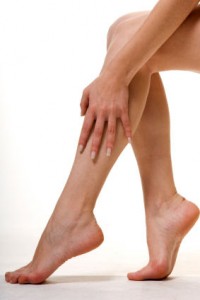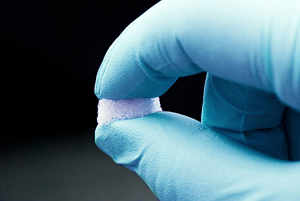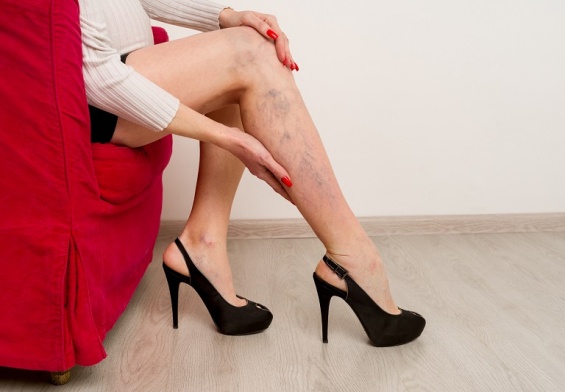Varicose veins, a common vascular condition, significantly impact the elderly population. Approximately 50 percent of women and 40 percent of men in the United States experience some form of vein problem, with the prevalence increasing with age. This comprehensive guide aims to provide caregivers, in-home care professionals, and families with essential insights into the nature of varicose veins, effective treatment options, and preventive measures, particularly in the context of elder care, including considerations for individuals with dementia.
Understanding Varicose Veins in the Elderly
Varicose veins are enlarged, twisted veins that commonly occur in the legs due to weakened or damaged valves. In the elderly, factors such as cumulative UV exposure, weakened immune systems, and thinner skin contribute to the development of varicose veins. Recognizing these factors is crucial for effective management and prevention.
Symptoms and Diagnosis
Common symptoms of varicose veins include visible, bulging veins, aching pain, swelling, and a heavy feeling in the legs. In severe cases, skin ulcers may develop near the ankle, indicating a serious vascular disease requiring medical attention.
Common Treatment Options for Varicose Veins
- Sclerotherapy: A procedure where a solution is injected into the vein, causing it to scar and blood to reroute through healthier veins.
- Laser Treatments: Utilizing strong bursts of light to close off varicose veins, making them fade over time.
- Endovenous Techniques: Involving the use of a catheter and probe to close off the affected vein using heat.
- Surgical Options: Reserved for severe cases, involving the removal or tying off of the affected veins.
Preventing Varicose Veins in Elderly Care
- Regular Exercise: Encouraging activities like walking or light jogging to improve circulation and vein strength.
- Leg Elevation: Elevating the legs when resting to improve circulation.
- Avoid Prolonged Standing or Sitting: Encouraging movement or position changes to prevent blood from pooling in the legs.
- Wearing Compression Stockings: To help veins move blood more efficiently.
The Role of Caregivers in Managing Varicose Veins
In-home caregivers play a vital role in both preventing and managing varicose veins in the elderly:
- Monitoring for Symptoms: Keeping an eye on any signs of leg pain, swelling, or visible vein changes.
- Assisting with Compression Stockings: Helping seniors put on and take off compression stockings, if prescribed.
- Encouraging Movement: Motivating seniors to stay active and move regularly to improve circulation.
- Scheduling Medical Appointments: Arranging visits to healthcare providers for vein assessments and treatment follow-ups.
Varicose Veins and Dementia Care
For seniors with dementia, understanding and communicating discomfort from varicose veins can be challenging. Caregivers need to be particularly observant of non-verbal signs of discomfort or pain in the legs and ensure regular medical check-ups.
Nutritional Support for Vascular Health
A diet rich in fiber and low in salt can help prevent the swelling associated with varicose veins. Including plenty of fruits, vegetables, and whole grains in the diet can aid in this regard.
Lifestyle Modifications in Elderly Care
- Avoiding Tight Clothing: Ensuring seniors wear loose-fitting clothes to avoid constriction around the waist, legs, or groin area.
- Choosing Appropriate Footwear: Encouraging the use of low-heeled shoes to improve calf muscle strength and circulation.
Technology Integration in Varicose Vein Care
Leveraging technology, such as wearable devices that monitor leg movement and circulation, can be beneficial in managing varicose veins in seniors.
Professional Training for Caregivers
Investing in professional training for caregivers on vascular health, the mechanics of varicose veins, and the latest treatment techniques is crucial. This training should cover the basics of vascular anatomy, signs of complications, and emergency response procedures.
Building a Support Network
Creating a supportive environment involving family members, healthcare professionals, and community resources can enhance the care and management process for seniors with varicose veins.
When to Seek Medical Attention
Any significant changes in leg pain, swelling, or the appearance of veins should prompt a medical evaluation. Early intervention can prevent complications and improve outcomes.
Conclusion
Varicose veins are a common issue in elder care, requiring a comprehensive approach that includes understanding the condition, implementing effective treatment strategies, and adopting preventive measures. Caregivers play a crucial role in this process, ensuring that seniors receive the necessary support and care to manage this condition effectively. By adopting a holistic approach that encompasses medical treatment, lifestyle changes, and continuous education, we can significantly improve the quality of life for our elderly loved ones dealing with varicose veins.




